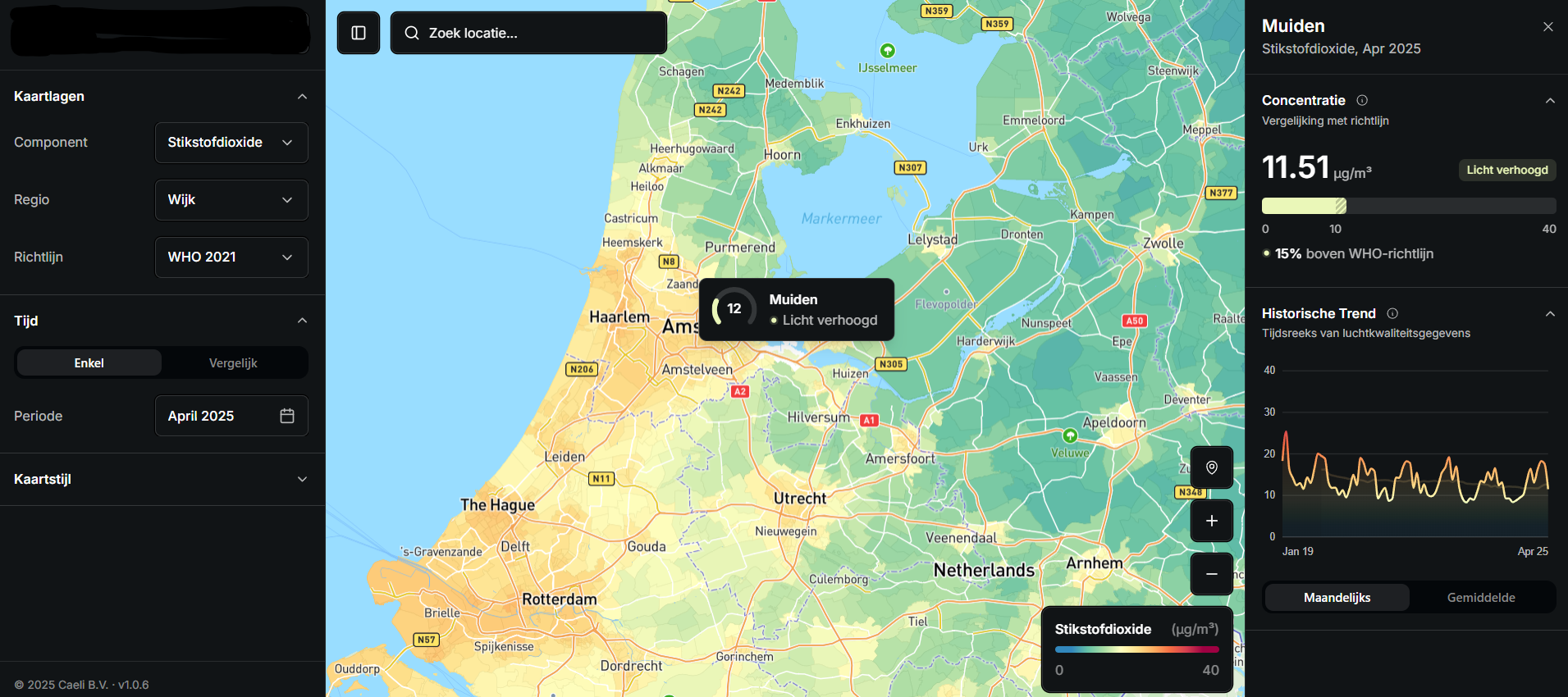The European Space Agency (ESA) and the Netherlands Space Office (NSO) will support DMI participant Caeli to use satellite data to measure and map CO2 emissions from governments, companies, and financial institutions worldwide.
Caeli has received substantial funding from the ESA through the NSO to further develop the Carbon Eye project. This project combines satellite data and AI technology developed by Caeli to provide frequent insight into CO₂ emissions at each location. This includes emissions from chemical plants, refineries, steel mills, and other industrial sites, as well as large-scale agriculture and dairy farms. Using Carbon Eye, companies, governments, and organizations can gain insight into their emissions and use this data for EU directives such as the CSRD, for CO₂ levies, for their own ESG and risk analyses, or for climate reporting.
Carbon Eye builds on the Air Quality Monitor (AQM), which Caeli previously developed and which is already being used by various cities such as Deventer, Kampen, Hilversum, Almere, and the Estonian capital, Tallinn. Governments such as that of Curaçao also use Caeli’s data for their policymaking and monitoring. While AQM focuses on local air health and government policy choices, Carbon Eye enables visualization of global greenhouse gas emissions and emission flows. Both are based on the same technology. The first results from Carbon Eye are expected in 2026.
According to Caeli, this funding also represents recognition from the space agency. “For us, it’s an important step. With Carbon Eye, we’re making the transition from proven technology to a globally scalable product,” says Caeli founder and director Martin Smit.
“This contract is a great example of how targeted support for innovation can lead directly to a viable commercial solution for a pressing global challenge. By supporting Carbon Eye, we are supporting a company that can help governments and businesses worldwide achieve their climate goals,” says Piera de Vito of ESA.
This project was developed through the Netherlands Space Office (NSO). “Carbon Eye demonstrates how Dutch deep technology, with support from ESA, can have an international impact in the field of climate data,” Smit adds.
